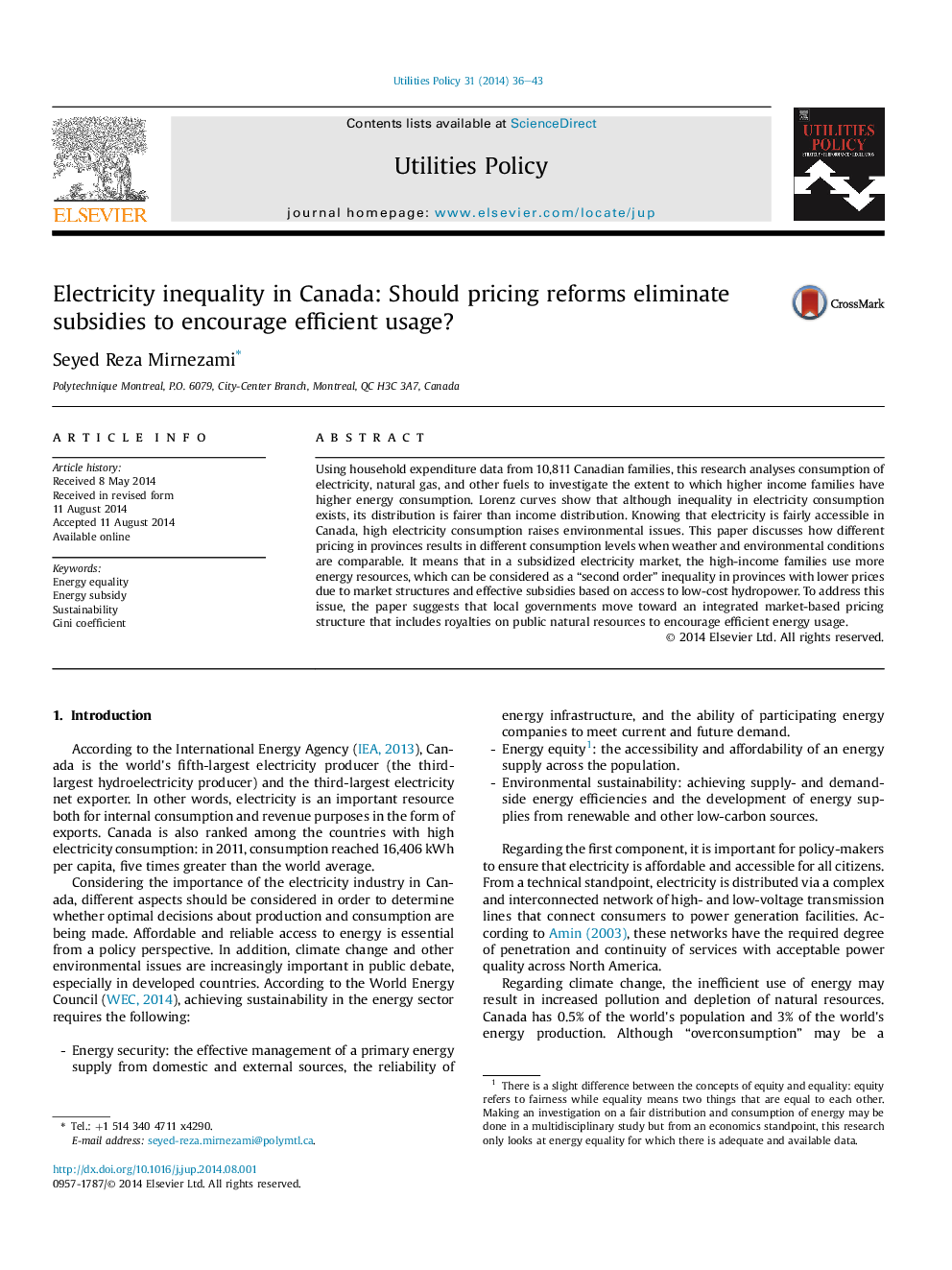| Article ID | Journal | Published Year | Pages | File Type |
|---|---|---|---|---|
| 7411795 | Utilities Policy | 2014 | 8 Pages |
Abstract
Using household expenditure data from 10,811 Canadian families, this research analyses consumption of electricity, natural gas, and other fuels to investigate the extent to which higher income families have higher energy consumption. Lorenz curves show that although inequality in electricity consumption exists, its distribution is fairer than income distribution. Knowing that electricity is fairly accessible in Canada, high electricity consumption raises environmental issues. This paper discusses how different pricing in provinces results in different consumption levels when weather and environmental conditions are comparable. It means that in a subsidized electricity market, the high-income families use more energy resources, which can be considered as a “second order” inequality in provinces with lower prices due to market structures and effective subsidies based on access to low-cost hydropower. To address this issue, the paper suggests that local governments move toward an integrated market-based pricing structure that includes royalties on public natural resources to encourage efficient energy usage.
Related Topics
Physical Sciences and Engineering
Energy
Energy (General)
Authors
Seyed Reza Mirnezami,
